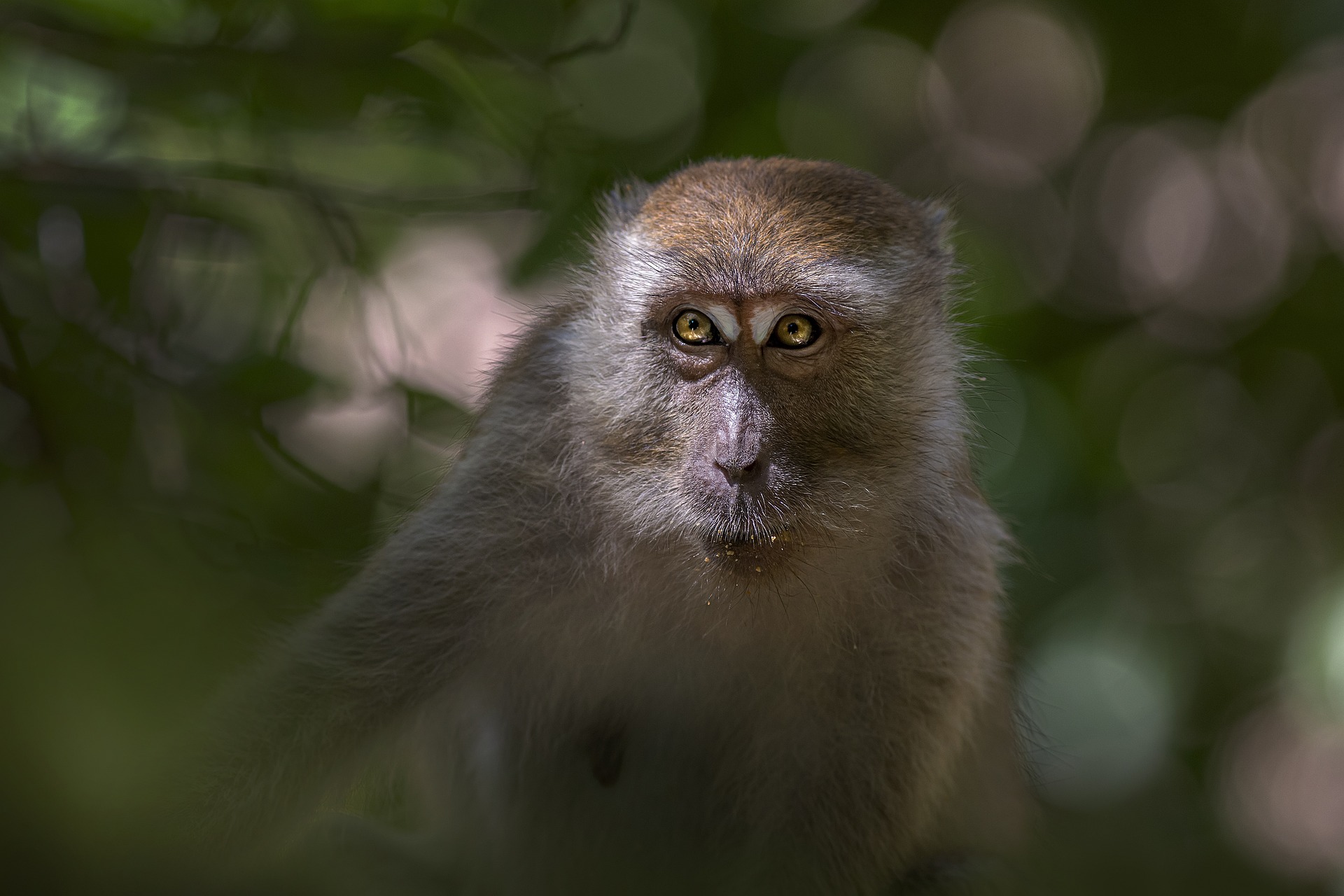The Crab-eating macaque (Macaca fascicularis), also known as the Long-tailed macaque, is a primate species native to Southeast Asia. Here are some key features and characteristics of the Crab-eating macaque:
- Appearance: Crab-eating macaques have a robust build with a long tail that is often longer than their body. They have a brownish-gray fur coat with lighter underparts. Their faces are characterized by a prominent muzzle and cheeks, and they have distinctive ear tufts. The name “Crab-eating” comes from their known habit of foraging for crabs along coastal areas, though they are omnivorous and consume a wide range of foods.
- Habitat: Crab-eating macaques inhabit a variety of habitats, including rainforests, mangroves, coastal forests, and urban areas. They are highly adaptable and can be found in both primary and disturbed habitats. They are known to thrive in human-modified landscapes, including agricultural areas and urban environments.
- Distribution: Their range extends from Southeast Asia, including countries such as Thailand, Malaysia, Indonesia, the Philippines, and parts of South Asia, such as Bangladesh and India. They are also found on some islands in the Indian and Pacific Oceans, including Borneo, Sumatra, and the Philippines.
- Diet: Despite their name, Crab-eating macaques are omnivorous and have a diverse diet. They primarily feed on fruits, leaves, seeds, flowers, insects, and small animals such as crabs, shellfish, and even small vertebrates. They are opportunistic feeders and will exploit a wide range of food resources depending on availability.
- Behavior: Crab-eating macaques are highly social animals, typically living in groups known as troops, which can vary in size from a few individuals to over a hundred. Within troops, there is a complex social structure with dominant and subordinate individuals. They communicate through vocalizations, facial expressions, and body language.
- Reproduction: Breeding occurs throughout the year, with females giving birth to a single offspring after a gestation period of around 5 to 6 months. Young macaques are dependent on their mothers for nursing and care for several months before becoming independent.
- Conservation: Crab-eating macaques are considered a species of Least Concern by the International Union for Conservation of Nature (IUCN) due to their wide distribution and adaptability to various habitats. However, they face threats from habitat loss, habitat fragmentation, hunting for meat and traditional medicine, and the illegal pet trade in some regions. Efforts to protect their natural habitats and mitigate human-wildlife conflicts are essential for their long-term survival.
Overall, the Crab-eating macaque is an adaptable and social primate species with a wide range across Southeast Asia, playing important ecological roles as seed dispersers and contributing to the biodiversity of their habitats.
Views: 21
Subscribe to the newsletter:
